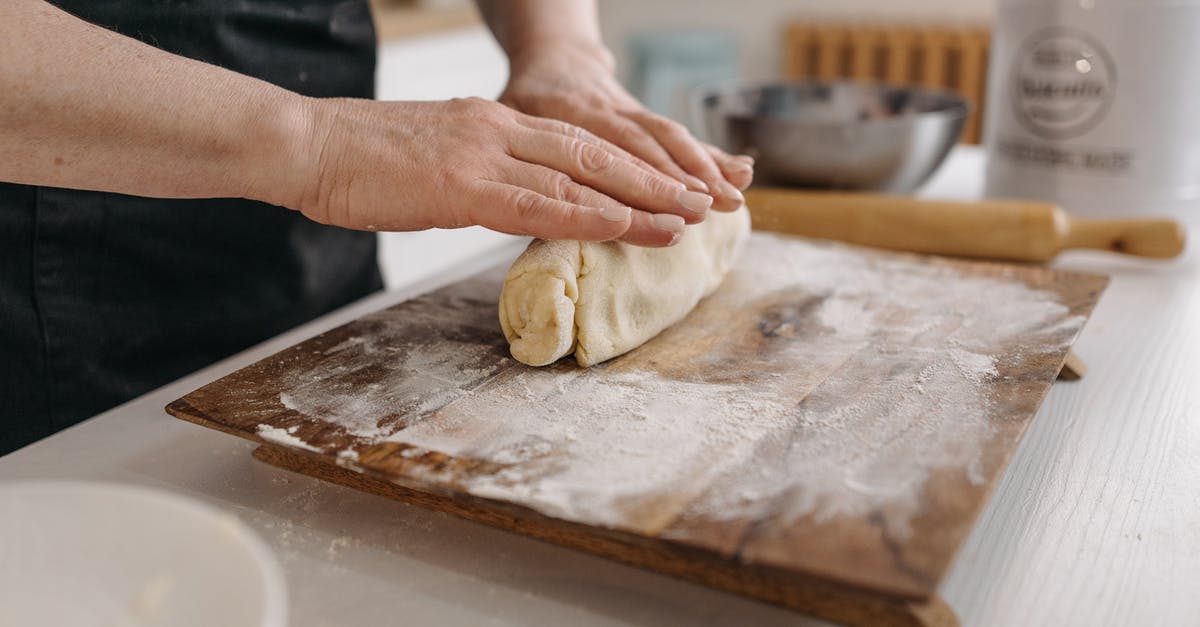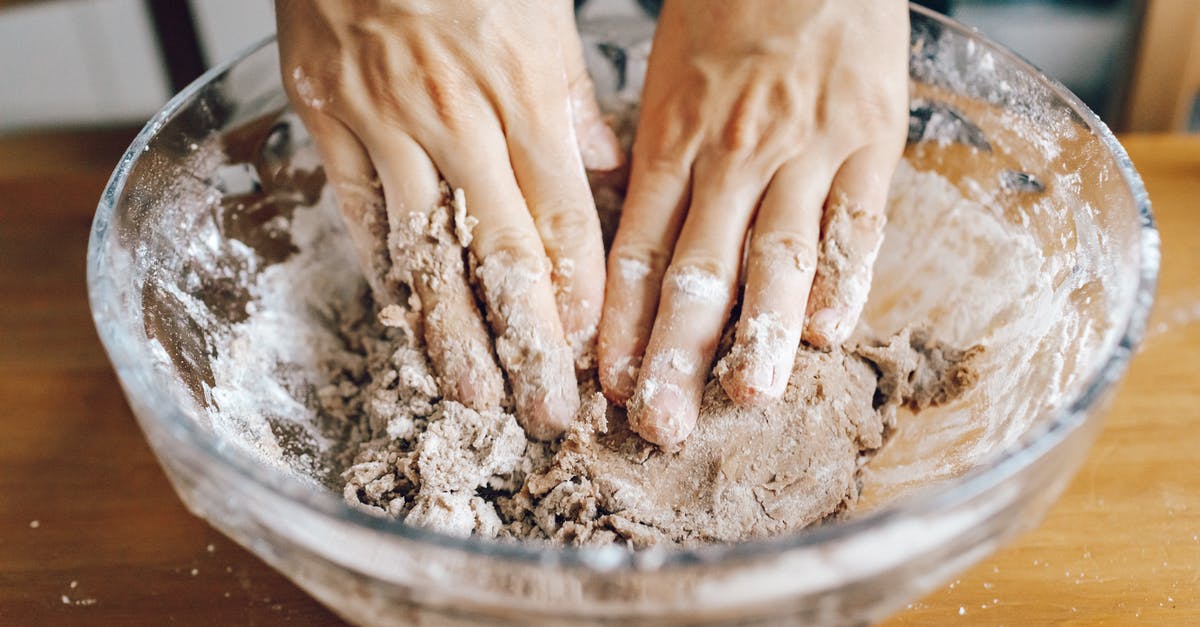Very Sticky Dough Before Kneading

It was my first time baking and followed a simple bread recipe. The ingredients are listed below. My problem was after mixing, before kneading, the dough was still very sticky and stuck onto my hand even before I started kneading it. In the video that I watched using that recipe, the dough wasn't that sticky. Can someone explain me why it happened and how can I remedy it?
- 2 cups all-purpose flour
- 2 cups bread flour
- 1/2 cup white sugar
- 5 tbsp melted butter
- 1 tsp baking powder
- 1 and 1/4 cup fresh milk warm
- 6 grams rapid rise yeast
- 1 tsp salt
- 1 piece raw egg
- 1 tbsp cooking oil
Best Answer
You may have done nothing wrong, it's common for bread dough to be very sticky after mixing. If you have your measuring right and the recipe is right time and technique will turn it from sticky to smooth.
There's 3 things that will happen:
- Absorption: flour doesn't absorb moisture instantly, most gets absorbed very quickly, but then some takes a bit more time
- Breakdown of carbohydrates: Enzymes in the flour break down carbohydrates into sugars, this process uses water
- Gluten development: glutenin and gliadin are the proteins which form gluten, when they do so they use water. This will happen naturally through enzyme action and yeast action
All these processes happen naturally, and will happen in your case if you get let it sit for awhile, known as letting it autolyse. I use this step in my bread making, and it makes a big difference in the stickiness and workability of the dough. It also reduces kneading time and effort by a large factor as some of the gluten development will happen without effort. It still may be sticky after autolysing, but that will go away as you knead it, assuming you aren't using the stretch and fold technique. Try letting it sit for 20 minutes, better yet an hour.
Your dough may still be a bit sticky after all this happens as its an enriched dough with lots of butter, sugar and egg. It may even still be tacky after kneading it, that's normal too and will probably go away after your first rise.
If it's still very wet after kneading your balance to wet and dry may have been off, in which case you should knead in small amounts of flour (a spoon at a time) until it's tacky. Don't rush it and don't add too much flour or it will go the other way and be too dry. This is why I weigh everything instead of using volume measurements in baking: small amounts matter. I even weigh water because it lets me be very consistent with the results. I would recommend you get a scale and convert to metric as it just works so much easier.
Pictures about "Very Sticky Dough Before Kneading"



Quick Answer about "Very Sticky Dough Before Kneading"
If your dough is so sticky that it sticks to everything, you need to add a little flour to it. As you are kneading it, make sure that your hands and your work surface are coated in a light dusting of flour, and add a few teaspoons of flour at a time. This will get rid of the stickiness.How sticky Should dough be before kneading?
You want your dough to be at least a little sticky when you're kneading it. As you knead it and develop more gluten, it's going to become less sticky and more easily pull away from your work surface, so there's no need to add any more flour at this stage.Does dough get less sticky as you knead?
For a normal loaf, the more you knead it the less sticky it becomes. Dough is always wet and sticky at first but, once you've kneaded it for five to six minutes, it becomes less sticky and more glossy as it develops a skin, which is the gluten forming.88: WHY is My Dough STILL STICKY? - Bake with Jack
More answers regarding very Sticky Dough Before Kneading
Answer 2
Measuring flour by volume is notoriously unreliable. Your flour was likely less packed than that in the recipe, and as a result your dough was stickier. When this happens, you need to add a bit more flour until the dough reaches the desired texture. Recipes that use weight measurements tend to be more reliable, especially for things with a lot of flour such as bread.
Answer 3
If we assume 5 ounces (weight) per cup of flour -- which is usually where I start with recipes that don't specify -- we get 20 ounces of flour. The 10 ounces of milk gets us to 50% hydration. Butter and egg will add a bit more moisture, so let's just estimate and call it 55-60% at most now. Butter is mostly fat, which will soften but not hydrate the dough. The same goes for oil and sugar, and that seems like a lot of sugar for bread. This is a rich, moderately low hydration bread, so it should be a very soft but not very sticky bread. It's possible the recipe was aiming for a higher hydration, using lighter "cups" than 5 ounces, and for a rich dough that would be common. But it sounds like you came up short on flour even then.
There are a few things you can do here:
- Let the dough rest for 20-60 minutes to absorb and for gluten to begin developing
- Both factors will decrease stickiness
- This would be called "autolyse" and is a common bread-making step
- Add flour to your kneading surface and knead it into the dough
- I would usually recommend kneading without flour or very little, for comparison
- Also note that the dough will become less sticky during kneading as gluten develops, so don't add too much
- Increase the amount of flour used next time
- For best results, weigh the flour, write down how much you used and the outcome
- Adjust again the time after that if needed
- Add even more fat
- e.g. knead with oily hands on an oily surface
- This is probably unnecessary for your dough, which is already quite rich, but can help sometimes. Think focaccia or pan pizza.
Sources: Stack Exchange - This article follows the attribution requirements of Stack Exchange and is licensed under CC BY-SA 3.0.
Images: Pavel Danilyuk, ROMAN ODINTSOV, Arina Krasnikova, Arina Krasnikova
